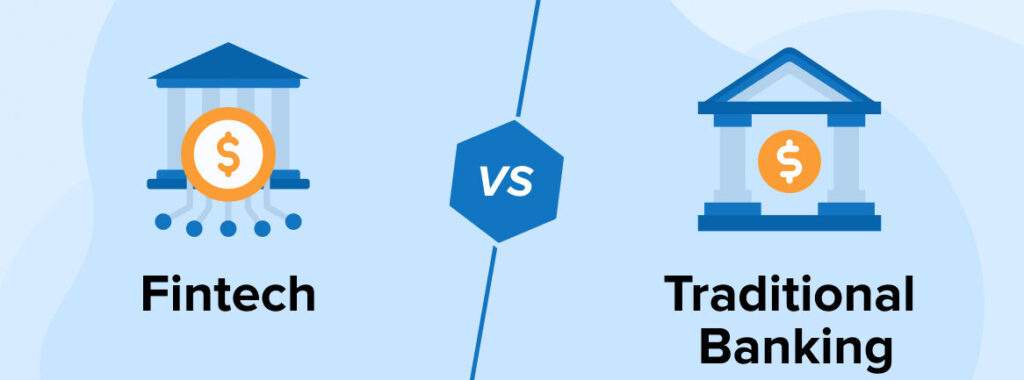The financial services landscape is evolving at a rapid pace, and at the forefront of this transformation is fintech—the fusion of finance and technology. With the rise of digital banking, fintech is challenging the traditional banking model, reshaping how financial services are delivered, and changing customer expectations. As we move deeper into 2024, the future of digital banking is becoming more dynamic, offering a range of opportunities and challenges for both fintech startups and traditional banks.
In this article, we’ll explore how digital banking, fueled by fintech innovations, is reshaping the future of financial services and what it means for traditional banks.
What Is Digital Banking?
Digital banking refers to the shift from traditional, branch-based banking to an entirely online or app-based approach. Digital banks offer a variety of financial services, such as checking and savings accounts, loans, investments, and payments, all through digital platforms. The rise of fintech has accelerated this shift, allowing customers to perform banking activities from the comfort of their homes or on-the-go via smartphones, computers, or other connected devices.
Fintech firms leverage technologies like artificial intelligence (AI), blockchain, cloud computing, and machine learning to provide banking services that are faster, more secure, and more personalized than traditional banks. These innovations are driving the future of digital banking, making it easier for consumers to access financial services and manage their money.
The Impact of Fintech on Traditional Banks
1. Increased Competition
Traditional banks have long dominated the financial services industry, but fintech is rapidly eroding their market share. Digital-only banks, or neobanks, operate without physical branches and rely on technology to offer more cost-effective services. Examples of popular neobanks include Chime, Revolut, and Monzo, which have gained significant traction by providing user-friendly digital experiences and low-fee services.
This increased competition has forced traditional banks to reassess their offerings and adopt digital strategies to stay relevant. To compete, traditional banks are investing in their own fintech initiatives, such as offering mobile banking apps, digital wallets, and online loan processing.
2. Shift Toward Personalization
One of the key advantages of fintech is the ability to provide highly personalized services based on data analytics. By leveraging data from customers’ spending habits, saving patterns, and financial goals, fintech companies can tailor their offerings to meet individual needs. For example, AI-powered robo-advisors can suggest personalized investment strategies, while machine learning algorithms can provide customized loan options or budgeting tools.
Traditional banks, traditionally relying on standardized products and services, are starting to adopt these personalization techniques to meet consumer expectations. This shift is essential as customers increasingly demand more customized financial products and services that cater to their specific needs.
3. Cost Efficiency and Innovation
Fintech’s disruptive influence also stems from its ability to provide services at lower costs. Traditional banks are encumbered by physical branches, legacy systems, and outdated infrastructure, which can result in higher operational costs. In contrast, fintech firms operate digitally, significantly reducing overhead costs.
This cost efficiency allows fintech companies to offer competitive fees and better rates on products like savings accounts, loans, and insurance. Traditional banks are now under pressure to innovate and streamline their operations to remain competitive. Many banks have launched digital banking services, mobile apps, and online platforms to reduce operational expenses and improve customer experiences.
4. Faster and More Convenient Services
One of the main advantages of digital banking is speed. Fintech innovations allow for faster transactions, real-time account updates, and quick loan approvals. Digital banks can offer instant account opening, 24/7 access to customer support, and seamless payment options across various platforms.
Traditional banks are catching up to this trend by upgrading their systems to enable faster transactions, such as faster payment processing and real-time credit transfers. As fintech continues to advance, traditional banks will be forced to adopt similar technologies to enhance the speed and convenience of their services.
5. Better Customer Experience
The customer experience is one of the most significant areas where fintech is outpacing traditional banks. Digital banks provide intuitive, user-friendly apps and platforms that allow customers to access and manage their accounts easily. Moreover, fintech companies emphasize 24/7 customer support, instant transactions, and a smooth, hassle-free user interface.
Traditional banks have long been criticized for their customer service, often facing issues like long wait times, complex systems, and a lack of personalization. However, in response to fintech innovations, traditional banks are beginning to prioritize customer experience and are investing in more accessible, digital-first services to improve customer satisfaction.
The Future of Digital Banking: Key Trends
As digital banking continues to evolve, several key trends are emerging that will shape the future of financial services.
1. Open Banking and APIs
Open banking refers to the practice of allowing third-party developers to build applications and services that can access financial data from banks through application programming interfaces (APIs). This opens up new opportunities for innovation in the fintech sector, enabling developers to create new tools that enhance banking services.
Traditional banks are slowly embracing open banking by allowing customers to share their financial data securely with third-party apps. This fosters collaboration between banks and fintech startups and enables consumers to have more control over their financial information.
2. Blockchain and Cryptocurrencies
Blockchain technology and cryptocurrencies like Bitcoin and Ethereum are gaining traction in the financial industry. Blockchain offers a decentralized and secure way to handle transactions, which could revolutionize digital banking and improve transparency.
While many traditional banks are still cautious about integrating blockchain into their systems, some have begun to explore its potential for secure transactions, cross-border payments, and even cryptocurrency exchanges. In the future, blockchain could play a significant role in disrupting the traditional banking system.
3. AI and Automation
Artificial intelligence (AI) and automation are set to play an even more significant role in the future of digital banking. AI can be used for everything from automating customer service via chatbots to predicting investment trends and managing risk.
AI-powered systems will continue to improve the accuracy of credit scoring, fraud detection, and loan approvals, while also enhancing customer service through personalization. This will allow banks to operate more efficiently, serve customers better, and offer more tailored financial products.
4. Biometric Security
Security is always a top priority for financial institutions, and with the rise of digital banking, ensuring the safety of online transactions is more critical than ever. Biometric security—such as facial recognition, fingerprint scanning, and voice recognition—is gaining popularity in the fintech sector.
Traditional banks are adopting biometric technologies to enhance security and make digital banking even more seamless. Customers will be able to access their accounts with a simple fingerprint scan or facial recognition, providing an added layer of protection against fraud and identity theft.
Conclusion: The Future is Digital
The future of digital banking is undeniably digital. Fintech is reshaping how banks interact with customers, offer services, and manage operations. The rise of neobanks, AI, blockchain, and open banking is forcing traditional banks to innovate or risk being left behind.
For traditional banks, the key to survival in this new era will be embracing digital transformation, investing in technology, and providing a superior customer experience. At the same time, fintech firms will continue to push the envelope, offering new and improved financial services that cater to the needs of today’s digital-savvy consumers.
As we move forward, the financial landscape will be shaped by a hybrid model where traditional banks and fintech companies collaborate to offer consumers the best of both worlds—innovative, cost-effective, and secure financial solutions.



